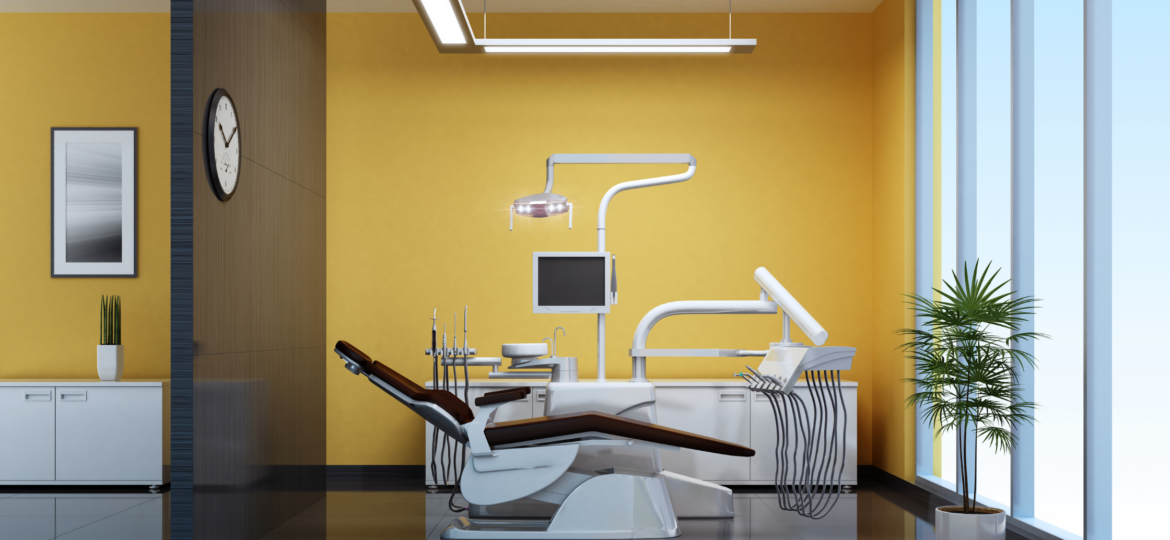
The dental profession is a fantastic field to work in: Whether you’re relieving constant tooth pain to keeping your customer’s teeth healthy and strong; there’s a lot of satisfaction within the profession. But, this field also comes with many health and safety risks for dental staff. While many may believe dentistry is a relatively safe occupation, dental professionals are the most at risk of having diminished health due to their work conditions. So, what can practices do to ensure a safe dental environment for their staff?
The 5 Most Common Risks in Dental Practices & How to Keep Your Team Safe
While there are many risks within any dental facility, some are more common than others. Here are the five most frequent hazards found in dental practices and helpful tips on reducing the risk for your staff.
1) Bloodborne Pathogens Exposure
The Risk: Exposure to bloodborne pathogens is a concern for any dental practice due to the various procedures and tools that involve bodily fluids. Without the proper precaution and control plan, dental professionals are at higher risk of infectious diseases like HIV, AIDS, Hepatitis B, and Hepatitis C.
How to Keep a Safe Dental Practice: To reduce the exposure to bloodborne pathogens, dental practices must have an exposure control plan that details how they use engineering controls, employee training, personal protective clothing, Hepatitis B vaccinations, and medical surveillance to keep their employees safe.
To reduce the likelihood of a sharps or needlestick injury, have the following policy in place:
- Plan safe handling and disposal before each procedure.
- Use safe needle alternatives when available.
- Activate the device’s safety features.
- Once the procedure is complete, immediately dispose of contaminated needles in OSHA-compliant sharps containers.
- Provide bloodborne pathogens training for your staff.
2) Radiation Exposure
The Risk: Dental x-rays are a common and necessary procedure to detect cavities, tumors, and tooth decay, but exposing a patient to radiation poses risks for both the patient and provider. High doses of radiation can damage molecular structures and lead to skin burns, hair loss, and an increased likelihood of cancer.
How to Keep a Safe Dental Practice: While radiation exposure is minimal within the typical dental office, there are still precautions practices should take to keep both their patients and staff safe:
- If possible, provide shielding to both patients and staff; when not possible, ensure the operator is at least six and a half feet from the tube head and out of the primary beam’s path.
- Designated radiation areas to limit exposure.
- Ensure staff working in radiation areas are wearing personal radiation monitors.
- Label rooms and equipment with caution signs.
3) Hazardous Materials
The Risk: There are various harmful chemicals in sterilization products, dental restorative materials, and even bodily fluids produced by humans. If these chemicals are not adequately controlled, it can lead to serious health consequences for dental professionals in contact with these chemicals daily.
How to Keep a Safe Dental Practice: Knowledge is power when it comes to hazardous materials. Ensure your staff has accessible information about the identities and hazards of chemicals. OSHA requires clear labeling, employee training, and safety data sheets relating to any dangerous chemicals within your practice.
4) Psychological Distress
The Risk: The British Dental Journal surveyed over 2,000 dentists and found that over half of their respondents (54.9%) are currently experiencing high stress within their workplace. Dental professionals undertake a lot of stressors within their day-to-day schedules as they are working within a confined space with hazardous materials, little time between appointments, and consoling apprehensive patients.
How to Keep a Safe Dental Practice: Managing your staff’s stress is no easy feat – especially in a high-stress industry like dentistry. But, as a leader in your practice, it’s important to show your team that you’re open and available to help them reduce their stress levels at work. A few ways you can do this are by:
- A great leader is respectful, compassionate, and attentive to their team; ensure your staff knows they can always come to you and that you value them as individuals.
- Ensure your team’s schedules aren’t overbooked – too much work can lead to your staff feeling overwhelmed and less productive.
- If possible, schedule “mental health breaks” for staff to spend 15 minutes away from their duties to refresh themselves mentally and become more focused for their next appointment.
5) COVID-19
The Risk: While the spread of any virus is a concern for dental practices, COVID-19 makes the top of the list. Many dental professionals are worried about their health and safety when treating 10-15 patients on any given day. With COVID’s contagiousness and the intimate nature of a dental professional’s work, this is a valid concern.
How to Keep a Safe Dental Practice: To ensure your team is as safe and healthy as possible, follow the latest COVID-19 protocols from the CDC. Best practices to reduce the spread of COVID-19 in your office:
- Ensure your team has the proper personal protective equipment.
- Establish a screening process to identify and manage patients who may have COVID-19.
- Encourage physical distancing when possible.
- If possible, have dental treatment provided in individual patient rooms.
Build a Healthy and Safe Dental Practice with Peak Performers
To learn more about how you can make safety a priority in your office, contact Peak Performers today. We have a wide range of education courses for OSHA and HIPPA training to help our clients build healthy practices that run more efficiently and deliver specialized care to their community.

